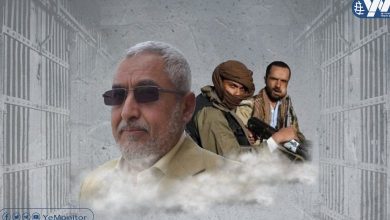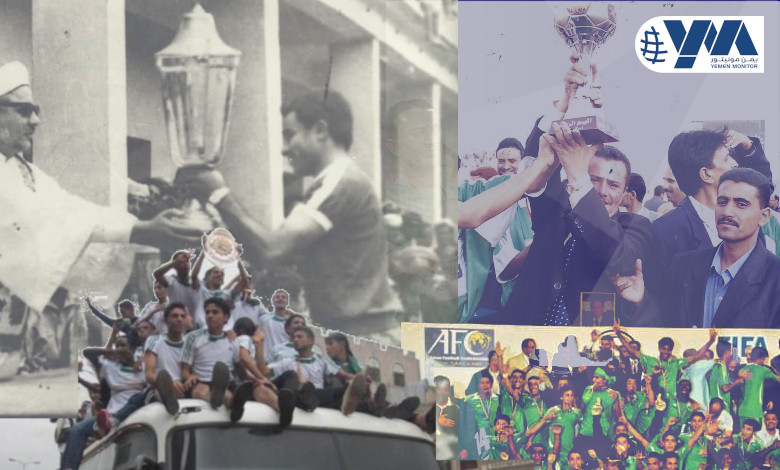
By Mareb Al-ward
The Shaab Ibb team sits on a long history that exceeds six decades, full of achievements and titles with great contributions to strengthening Yemen’s local competitions and various national teams.
In this article, we go on a journey through time to explore the idea of founding the club and its owners. We stop at the stations of the first generation and the beginning of writing the history of titles, reaching the stage of football glory in the golden period that began at the beginning of the millennium. We review its positive impact in improving official competitions, specifically the league and the President’s Cup, and stimulating uncrowned clubs. It won the competition, as well as its contributions to improving the participation of various national teams as the most important tributary of their players in all age groups.
Foundation and name
Before Yemen’s North ‘revolution of September 26, 1962, there was no club in the city of Ibb containing young people except for those who would practice some sport activities such as volleyball and football on a limited scale in Al-Hawari (neighborhoods) due to the general view of it as a “disgrace.” However, this situation had gradually changed a year after the revolution, with Its government including one of these young men, Sheikh Abdulaziz Al-Hubaishi, who was appointed as Deputy Minister of Transportation to carry out his duty towards them. In the same year, he founded the Ibb People’s Club or sha,ab Ibb with the participation of Captain Ali Al-Attab and Dr. Rashad Al-Baadani, Muhammad bin Muhammad Al-Gharbani, Captain Ahmed Al-Darrab, then some others joined them later.
The founding of the club coincided with the arrival of the Egyptian military, educational, medical and cultural missions, which contributed to the establishment of the Cultural Center in the city of Ibb to become a headquarters for young people to practice their sports activities. These represented the Sha,ab Ibb Club and others will have a club to represent them after four years, which was “Al-Fatwa”, whose most prominent founders included Abdel Hafeez Bahran, Mohamed Alwan and Mohamed Al Mahrsi among others.
The naming of Al-Shaab followed the belief of its founders, led by the freedom fighter Sheikh Abdulaziz Al-Hubaishi, in the dawn of the people with the revolution and the restoration of their right to choose their lives and rulers, while the name “Al-Fatwa” was attributed to its most prominent founders, Abdul-Hafiz Bahran, in reference to a Syrian club that bore the same name in 1950, according to what Al-Shaab and Al-fatwa’s former player Abdullah Ali Ghazi told me.
The players continued in the cultural center until the Egyptians left Yemen in 1967, says Captain Ali Al-Attab. After that, they moved to the house of his father, Hajj Qassem, who donated the first floor to them in the “Al-Samaser” neighborhood. They took the center’s furniture with them and continued there until they moved to the club’s current headquarters, located next to Al-Shaab School.
The establishment of “Al-Fatwa” was a smart and far-sighted step taken by Captain Ali Al-Sabahi and those with him to preserve Al-Shaab Club by competing with another team and contributing to the development of sports in the city at that time. This is what happened, as the competition was intense leading to an increase in youth interest in the two clubs, from which two new clubs finally emerged in the early seventies: Al-Tali’a, which was based under “Cinema”building, and Al-Ahly, which settled under Al-Aroumi Pharmacy. Their sporting, cultural and social activities continued for a period of time until each of them returned to its origins; Al-Talia,a to Al sha,ab and Al-Ahly to Al-Futwa (Al-Futwa merged with Al-Salam which was “founded about 74/75” to form the Ibb Union in 1992), according to the same source.
Al-Sabahi, who later became the first head of the Football Association in the north of the country, is considered one of the first coaches for the Al-Shaab and Al-Futwa clubs at the beginning of their establishment, due to his experience and the skills he had acquired during his studies in Egypt, along with Captain Ahmed Al-Darrab and some Egyptians.
Beginning of titles
The team began writing the history of titles in 1972 when it won the Rothman Cup, and the following year it won the Setim Cup, and in 1975 it became champion of the Southwest Region League. All of these tournaments were official and were supervised by the Social Affairs Office, says Captain Ghazi, who has extensive knowledge of the history of the sports movement in Ibb. By virtue of his association with Sheikh Al-Hubaishi, who is credited with founding and sponsoring clubs and supporting athletes in general.
In 1976, the first official sports entity was formed under the name “Supreme Sports Committee.” Two years later, the “General Sports Conference” was established, from which the sports federations emerged, including the Football Association. It was headed by Ali Al-Sabahi. In that year, the first football league was held with the participation of 16 clubs, including The Sha,ab Ibb, which had won third place.
The team was filled with many distinguished players, according to Captain Al-Attab, who spoke about his generation, including “Muhammad Al-Ghorbani, Muhammad Al-Saqqaf, Ahmed Al-Dharrab, Muhammad Al-Khayyat, Abdo Al-Qaraa, Hussein Al-Baghda, Muhammad Falah, Abdo Al-Khayyat, Yahya Al-Muhtadi, Ahmed Al-Hafni, Ahmed Al-Faqih, Abdul Wahed Qadi, Ismail Dabis, Ahmed Al-Baadani.
In the 1980s, specifically in 1984, Al-Shaab was relegated to the second division and returned a year later to write a new history with titles, starting with the 1987/88 season by obtaining the title of runner-up of the Republic Cup champion. In the 1988/1989 season, they won the league championship and repeated the achievement of the title of runner-up of the Republic Cup champion. This was led by the late coach Abdullah Ateeq.
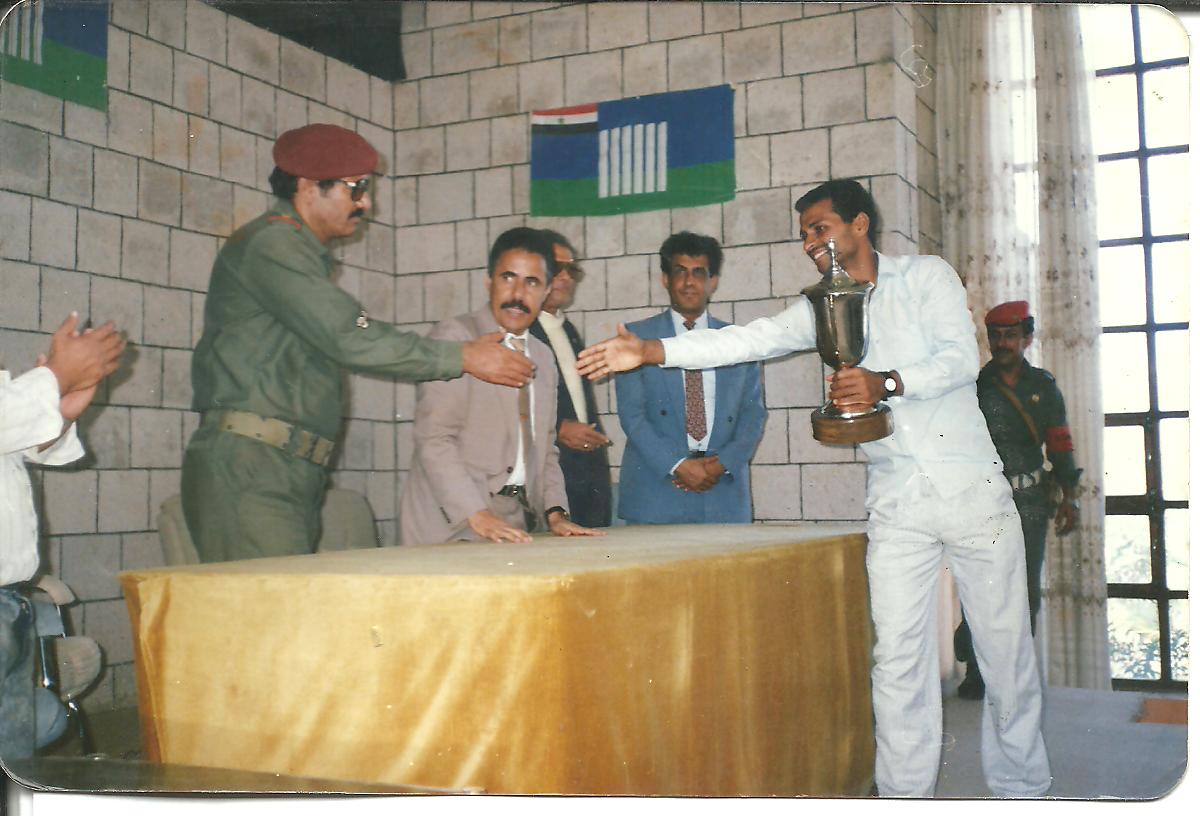
The club continued to compete strongly and retained the league title for the second year in a row, and with it the shield forever. In the same year, it also won the first title of the new tournament, the President’s Cup, under the leadership of national coach Ahmed Ali Qasim, and thus the club concluded the decade of the eighties on a high note.
Among the most prominent players of that generation are “Ibrahim Al-Sabahi, Abdullah Al-Sabahi, who was nicknamed “The Buffalo,” Muhammad Al-Hamami, Khaled Al-Wajih, Muhammad Al-Sabahi, Adel Al-Sabahi, Arif Dhiban, Abdo Saif Muhammad, and Muhammad Al-Saharani,” according to Captain Ali Al-Attab’s assessment.
The Nineties period
After the reunification of the two parts of the country on May 22, 1990, Yemeni football moved to a new stage of development with the establishment of the first unified league at the country level, in which the Al-Tilal team from Aden won. The league soon stopped for two seasons due to the war of secession.
In this decade, the Sha,ab Ibb would be on the verge of relegation for the second time. Perhaps the coincidence is in the dates of relegation in the two cases (84 and 94), but the difference between them is that in the first remained for a year and in the second for two years. What they have in common is that after the ascension it was ascending to the summit of coronation, and this was evident from The 1998/99 season, when it achieved third place in the league.
Golden period
The beginning of the millennium represents the period that some would like to call ‘golden’, given the number of titles won by the club and the team’s influence on the level of strengthening competition and breaking the monopoly on tournaments, in addition to its role in providing the various national teams with the best players who contributed to achieving the best international participations.
In the 2001/2000 season, the team won second place in the league and then continued its rise to the top in the 2001/2002 season by winning the President’s Cup at against Tadamon Shabwa with a clean score.
During that period, winning the league title had not been easy for any team except for two, Al-Ahly and Al-Wahda from Sanaa, which had alternated titles since Al-Wahda’s achievement (except for the first title that went to Al-Tilal), as Al-Ahly won five and Al-Wahda four. Therefore, Al-Shaab’s victory in the league championship in the 2002/ 2003 season marked a new history for the competition with the emergence of a new champion that broke the monopoly on its titles and contributed to strengthening it – as happened later – and opened the door wide for other clubs to compete. The league witnessed the birth of champions for the first time later.
As for the team, it added the third league title to its stores combined with the President’s Cup title after defeating Shaab Hadhramaut by 2/1. It is noteworthy that the team’s coach was the Iraqi Khalil Allawi.
Al-Shaab club set records in the league, scoring 46 points from 14 wins, four draws and 4 losses. They were ranked as the strongest attacking line with 37 goals and the strongest defense line with 15.
Its striker, Fikri Al-Hubaishi, was credited with the coronation by scoring 13 goals, which gave him the title of top scorer in the league.
As a continuation of their brilliance, the team retained the league title for the second time in a row in the 2003/2004 season, collecting 46 points from 13 wins and seven draws, losing only two matches, scoring 29 goals and conceding 13 to be the strongest defense line for the second season in a row.
In the same season, the team reached the final match of the President’s Cup for the third time in a row, but lost it to the Sha,ab Sana’a with two clean goals. The team’s coach at that time was the Iraqi national Faisal Aziz.
In the 2005/2006 season, the club finished runner-up in the league with 48 points, winning 14 matches out of 26, drawing six and losing the same.It had the strongest attacking line with 51 goals thanks to striker Fikri Al-Hubaishi, who won the league’s top scorer title with 26 goals.
In that season, the champion was Al-Saqr Club from Taiz, which would win the title again, as well as Al-Hilal from Hodeidah, then Yarmouk and Al-Orouba from Sanaa, and all of them joined the list of champions of the competition after the Shaab Ibb broke the monopoly on its titles.
Like every team, ‘Al-Anaid’ went through periods of decline and fluctuation in level until the 2011/2012 season, in which it regained the league title and retained the shield forever because it won the title three times after Al-Wahda.
This victory came after an exciting competition until the last moments, in which Al-Shaab was equal in points with its neighbor, Al-Ittihad, with 48 points, with the former having an advantage in the number of goals, winning the first leg and tying it in the second leg. The Football Association approved the application of the competition regulations to decide the league champion, which stipulates holding a playoff match between the two teams with equal points. Al-Shaab won 3/2 goals.
Al-Shaab was the strongest attacking line, with 39 goals, and the strongest defense line, in partnership with Al-Orouba, with 20 goals.
In 2013, Al-Shaab won the Super Cup (which brings together the league champion and the President’s Cup against Al-Ahly Taiz on penalties after the match ended in a 1-1 draw.
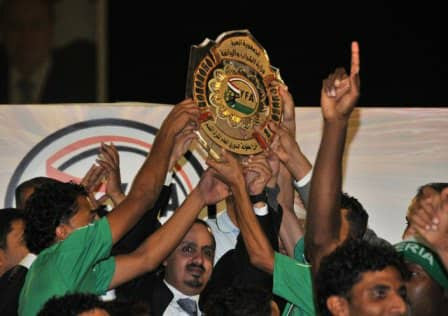
It is worth mentioning here that the coach of the league and super titles was coach Ahmed Ali Qasim, who is considered one of the most successful coaches of Al-Aneed(sha,ab Ibb )and the best coaches at the national level.
Among the most prominent players of the millennium were Abdul Salam Al-Ghurbani, Ihab Al-Nuzaili, Faisal Al-Hajj, Wafi Abdullah, Akram Al-Warafi, Hisham Al-Warafi, Radwan Abdul-Jabbar, Nashwan Al-Hajjam, Nashwan Aziz, Ahmed Rami, Fikri Al-Hubaishi, and Ayman Al-Hajri.
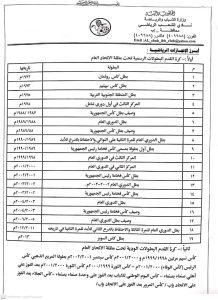
External Participations
Al-Shaab participated in the Asian Cup Winners’ Cup in 2001, where they played with Al-Wahdat of Jordan and defeated them by three to two goals, then lost the second leg by 5/0.
In the AFC Cup in 2004, the club played six matches, winning two, drawing one, and losing three.
It participated in the Arab Champions League in 2004 and 2005.
In the same tournament in 2013, the team played six matches and did not achieve any victory.
In 2012, it participated in the Arab Club Federation Cup.
Club presidents
Among the most prominent presidents of the club, according to its official documents, are Dr. Rashad Noman Al-Baadani, Hassan Al-Haddad, Major Abdul-Karim Al-Katef, Muhammad bin Muhammad Al-Gharbani, Abdul-Karim Mounir, Muhammad Al-Saidi, Ahmed Al-Darrab, Ali Muhammad Al-Sabahi, Sheikh Ali Jalab, and the current president, Sheikh Abdul Wahed Salah.
Derby matches
The Ibb derby has always been characterized by competition, strength, enthusiasm, and crowd attendance, regardless of the level of the two teams or their ranking in the league.
The derby is considered one of the strongest derbies in Yemeni football, if not the best, in the opinion of many analysts, given that it maintains the peculiarity of competition and strength even in the worst conditions for two or one of the teams, in addition to the influence played by the fans, whether in Al-Kabsi Stadium or May 22 Stadium.
Sometimes psychological preparations play a major role in the outcome of the match, and other times the technical aspects have the final say. Of course,there are those who see a role for small details, and it remains to say that the derby combines all these factors and adds other calculations to them that are no less important.
The rivalry between the Shaab and the Etihad may be stronger than it was in the past, when the two clubs were the shaab and the Al-fatwa, which would later be the Al-salam . both of them later united under the name of the Etihad.
The numbers of the matches between the two clubs from the 1998/1997 season until the 2013/2014 season indicate 25 matches, with Al-Shaab winning ten of them and scoring 29 goals, while Al-Ittihad won six, scored 24 goals and tied in nine matches, only three of which ended in a goalless draw.
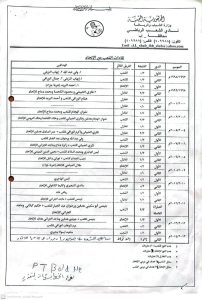
Derby matches
According to Captain Al-Attab and Captain Ghazi, the name goes back decades and its owner is sports commentator and journalist Abdo Jahsh, who gave this nickname to the team for its ability to turn the outcome of a match in which it trailed into victory.
This is called a “remontada,” which is a sports term that means returning in the match and recording an unexpected result.
Yemen’s National team’s Tributaries
The club is considered one of the teams that provides most players to the various national teams thanks to its reliance on the talents it has contained since childhood and then develops its capabilities in the cubs and youth categories before finally reaching the first team.
Captain Adel Jawas, the club’s secretary, says that the policy is to rely on young talents who join the club and are nurtured by the club. For him, the exception is signing ready-made players.
Since the founding of the Football Association in the late 1970s, the club has been supplying national teams with its players, most notably Ibrahim Al-Sabahi. The number of players provided by the club has increased since the beginning of the millennium, which is seen as a golden period in terms of achievements, whether in football, volleyball or table tennis.
For example, among the players of Yemen’s Al-Amal(hope )youth team that reached the final of the Asian Cup in 2002 and qualified for the World Cup the following year, four players from the team were Akram Al-Warafi, Yasser Al-Baadani, and Muhammad Al-Salat and Riyadh alnuzaili.
According to what Goas told me, since that period, any national team squad has included at least three or more players from the club.
Examples of prominent names include Abdul Salam Al-Ghorbani, Fikri Al-Hubaishi, Nashwan Al-Hajjam, Radwan Abdul-Jabbar, Ihab Al-Nuzaili, and others.
Finally, despite all the club’s history and its importance in terms of competitions and national teams, it does not have a suitable stadium for matches and training, and all it has is a dirt dusty field.
The club’s secretary said in a press interview that their resources do not allow the construction of a stadium because it would cost about one billion riyals to be an integrated sport stadium and not just a grass field, blaming the Ministry of Youth and Sports and successive administrations for their negligence.

